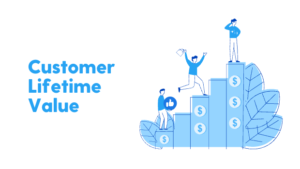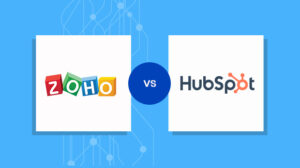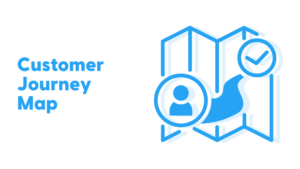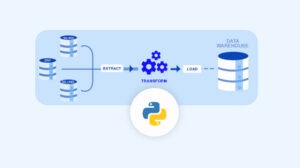Customer retention is defined as the ability of a company to keep its customers over time. It is the opposite of customer churn, which is the rate at which customers stop doing business with a company.
A company with high customer retention can keep its customers satisfied and loyal, while a company with low customer retention may struggle to maintain a stable customer base.
There are many strategies that companies can use to improve customer retention, including offering high-quality products and services, providing excellent customer service, and building strong relationships with customers. Companies can increase their profits and reduce the costs of acquiring new customers by focusing on customer retention.
Factors that Affect Customer Retention
There are many factors that can affect customer retention, including the quality of products or services, pricing, customer service, and the overall customer experience.
- Quality of products or services: Customers are more likely to remain loyal to a company if they are satisfied with the quality of the products or services they receive. For example, a customer who consistently receives high-quality products from a company is more likely to continue doing business with that company than a customer who frequently receives faulty or subpar products.
- Pricing: Pricing can also play a role in customer retention. Customers may be more likely to remain loyal to a company if they feel that the prices are fair and reasonable. On the other hand, if a company’s prices are significantly higher than those of its competitors, customers may be more likely to shop around for better deals.
- Customer service: A company’s level of customer service can also affect customer retention. For example, a customer who receives prompt and helpful assistance when they have a problem with a product is more likely to continue doing business with that company than a customer who has difficulty getting in touch with customer service.
- Overall customer experience: The overall customer experience can also play a role in customer retention. Customers are more likely to remain loyal to a company if they have positive experiences with the brand and feel a sense of connection to it. For example, a customer who has a positive experience shopping at a particular retail store because of the friendly and knowledgeable staff, is more likely to return to the store in the future.
- Personalization: Personalization of services can also play a role in customer retention. Customers are more likely to remain loyal to a company if they feel that it understands them and provides services tailored to their needs. For example, a customer who receives customized product recommendations or personalized discounts is more likely to return to the company than a customer who receives generic offers.
Also, read:
How to Measure Customer Retention
There are several KPIs and metrics to measure customer retention. Here are a few options:
- Customer Retention Rate: This is the percentage of customers who continue to make purchases from your business over a given period. To calculate the retention rate, divide the number of customers at the end of the period by the number of customers at the beginning of the period, and multiply by 100.
- Customer Lifetime Value (CLV): This is the total amount of money a customer is expected to spend on your products or services over the course of their relationship with your business. Calculating CLV can help you understand the value of retaining a customer and can be used to set customer retention goals.
- Repeat Purchase Rate: This is the percentage of customers who make a second purchase from your business. To calculate this, divide the number of repeat customers by the total number of customers, and multiply by 100.
- Churn Rate: This is the percentage of customers who stop doing business with you over a given period. To calculate churn rate, divide the number of customers who churned by the total number of customers at the beginning of the period, and multiply by 100.
- Customer Satisfaction (CSAT) Score: This measures how happy customers are with your business on a short-term (transactional) basis. You can calculate CSAT by asking customers to rate their satisfaction with your products or services on a scale of 1 to 10. A high CSAT score can be an indicator of customer retention.
- Net Promoter Score (NPS): This measure of long-term customer loyalty and the brand sentiment is used to gauge customer retention. To calculate NPS, you ask customers to rate their likelihood of recommending your business to others on a scale of 0 to 10. Customers who rate you a 9 or 10 are considered “promoters,” and those who rate you a 0 to 6 are “detractors.” The NPS is calculated by subtracting the percentage of detractors from the percentage of promoters.
14 Proven Customer Retention Strategies
There are many strategies that businesses can use to improve retention and reduce customer churn. Here are 14 ways to increase customer retention:
- Offer excellent customer service: Customers are more likely to stay with a business if they feel their needs are being met and the business values their loyalty.
- Provide incentives for repeat business: Offer discounts, loyalty rewards, or other incentives to encourage customers to continue doing business with you.
- Provide a seamless user experience: Make sure that your website or app is easy to navigate, and that the checkout process is smooth and efficient.
- Foster a sense of community: Create a sense of belonging among your customers by building an online community or hosting events and activities. You can use social media platforms to interact with customers, respond to inquiries and complaints, and share content.
- Solicit customer feedback: Ask for customer feedback and use it to make improvements to your products or services. This can show customers that you value their opinions and are committed to meeting their needs.
- Personalize the customer experience: Use customer data to create personalized marketing campaigns and recommendations. This can make customers feel like they are receiving special treatment and increase their loyalty to your business.
- Follow up with customers: Reach out to customers after their initial purchase to check in and see how they are enjoying the product or service. This can help identify any issues and give you the opportunity to resolve them, which can increase customer satisfaction and retention.
- Offer multiple communication channels: Make it easy for customers to get in touch with you by offering multiple communication channels, such as email, phone, and social media. This can make it easier for customers to reach out with questions or concerns and can make them feel more connected to your business.
- Keep customers informed: Keep customers updated on new products, services, and promotions by sending newsletters or other forms of communication. This can help keep your business top-of-mind for customers and encourage them to continue doing business with you.
- Address customer complaints promptly: If a customer has a complaint, it’s important to address it promptly and to the best of your ability. This can show the customer that you value their business and are willing to go the extra mile to keep them satisfied.
- Continuously improve your product or service: Keeping your product or service up-to-date and in line with customer needs can help increase customer retention. Consider conducting market research to gather feedback and insights on how to improve your offering.
- Offer free shipping: Many customers are more likely to make a purchase if they don’t have to pay for shipping.
- Provide a hassle-free returns policy: Make it easy for customers to return products if they aren’t satisfied and consider offering free return shipping.
- Offer a free trial or low-cost introductory offer: This can be a great way to get new customers to try your service and can increase the likelihood that they will become paying subscribers.
- Create valuable content: By providing valuable content, such as blog posts or how-to guides, you can establish yourself as a go-to resource for your customers. This can help to build customer loyalty.
Also, read:
Challenges in Customer Retention
- Competition: Increased competition can make it difficult for organizations to retain their customers, as customers may be lured away by the offerings of competitors.
- Customer expectations: Customer expectations are constantly evolving, and it can be a challenge for organizations to keep up and meet these expectations.
- Customer experience: Poor customer experiences can lead to customer churn, so it is important for organizations to prioritize improving the customer experience.
- Changing market conditions: Changes in the market, such as shifts in consumer behavior or changes in technology, can impact an organization’s ability to retain customers.
- Limited resources: Some organizations may have limited resources, such as budget or personnel, which can make it difficult to implement effective customer retention strategies.
Using Customer Data and Analytics for Customer Retention
Using customer data and analytics can help companies better understand their customers and their behavior, which can be valuable for customer retention. This information can be used to create targeted marketing campaigns, improve the customer experience, and develop new products and services that meet the needs and preferences of specific customer segments.
For example, a company might use data on customer purchases, website activity, and social media engagement to identify patterns and trends in customer behavior, which can be used to create personalized offers and promotions that are more likely to retain customers successfully. Additionally, analytics can also be used to identify at-risk customers so that the company can take proactive steps to address their concerns and keep them from leaving.
Also, read:
Using Google Analytics 4 to measure Customer Retention
Google Analytics 4 (GA4) provides several features that can be used to measure customer retention, including:
- User-level analysis: GA4 tracks users across devices and sessions, allowing you to see the full customer journey and understand how users interact with your website or app.
- Custom events: You can use custom events to track specific actions that users take on your website or app, such as making a purchase or signing up for a newsletter. This can help you understand how users engage with your product or service.
- Cohort analysis: GA4 allows you to segment users into groups based on shared characteristics, such as the date they first visited your website or the device they use. You can then analyze how these groups behave over time to understand how well you retain users.
- Audience definitions: GA4 allows you to define specific audiences based on user behavior, such as users who have made a purchase in the past 30 days. You can then analyze the retention rates of these audiences to understand how well you retain users.
For example, these are the steps that an eCommerce website can follow to measure customer retention using GA 4:
- Set up GA4: If you haven’t already, set up GA4 for your website and ensure that it is tracking user behavior.
- Define your customer retention goals: Determine what you want to achieve with your customer retention efforts. For example, you may want to increase the number of repeat purchases made by customers.
- Identify key events: Identify the events that are most relevant to your customer retention efforts. For an eCommerce website, this may include events such as product page views, add to cart, and purchase. Read more – Customer Journey Map
- Set up custom events: Set up custom events in GA4 to track the identified events. For example, you can set up a custom event called “Product Page View” to track when a user views a product page. You can also set up custom parameters to capture additional information about the events, such as the product name or category.
- Analyze the data: Use the custom events and other data in GA4 to analyze user behavior and understand how well you retain customers. For example, you can use cohort analysis to see how long users who make a purchase continue to make purchases. You can also use audience definitions to create segments of users who have purchased in the past 30 days and compare their retention rates to those of other segments.
- Communicate findings: Share the findings of your analysis with relevant stakeholders, such as the customer retention team or upper management. For example, you can present the results of your cohort analysis in a report to show how well you retain customers over time.
- Implement and track improvements: Based on the findings of your analysis, implement improvements to your customer retention efforts and track the results to ensure they are effective. For example, you may decide to implement personalized email campaigns for customers who have not made a purchase in the past 60 days. You can track the results of these campaigns to see if they successfully increase customer retention.
Best way to Track and Increase Customer Retention
Along with GA4, a data warehouse-led approach is how businesses in the digital age keep track of their customer data and leverage it for retention insights. You can follow the template below:
- Define your customer retention goals: Determine what you want to achieve with your customer retention efforts and how you will measure success. This will help guide the data you need to collect.
- Identify key data sources: Identify the data sources that will be most relevant to your customer retention efforts. This may include data from customer interactions (website, marketing avenues, customer support tools), sales data (CRM), survey results etc.
- Collect and consolidate data: Gather data from the identified sources and consolidate it into a data warehouse. You may need to clean and transform the data to ensure it is usable.
- Analyze the data: Use analytics tools or techniques to analyze the consolidated data and identify patterns and trends.
- Communicate findings: Share the findings of your analysis with relevant stakeholders, such as the customer retention team or upper management.
- Implement and track improvements: Based on the findings of your analysis, implement improvements to your customer retention efforts and track the results to ensure they are effective.
A data warehouse can be the single source of truth for your business, empowering and accelerating data-driven growth.
Also, read: Modern Data Stack
Conclusion
In conclusion, customer retention is crucial in today’s competitive business environment. However, many organizations struggle with implementing effective customer retention strategies due to a lack of robust data infrastructure. A data warehouse can serve as the central repository for all of an organization’s data, providing a single source of truth for decision-making.
Saras Analytics offers a comprehensive eCommerce data integration solution and fractional data team to help businesses set up their analytics and reporting systems and leverage their data to drive customer retention efforts. With expertise in implementing these solutions for hundreds of brands and agencies, Saras Analytics can provide the necessary support to help businesses succeed in their customer retention efforts.













